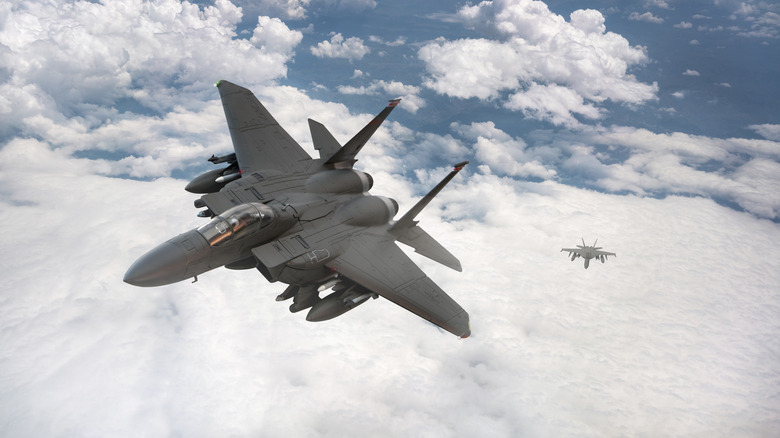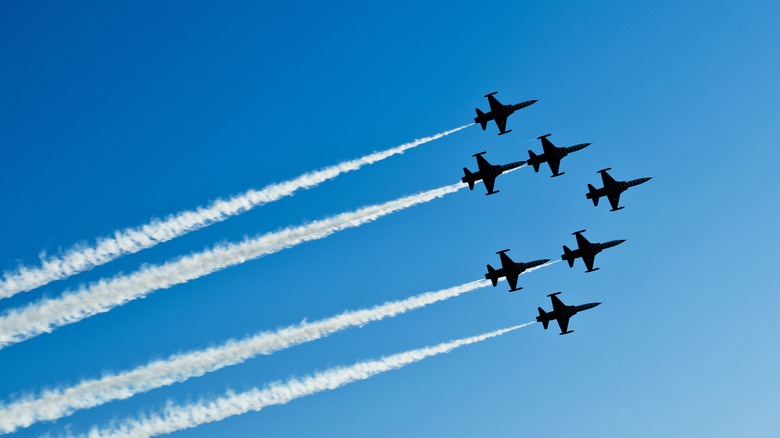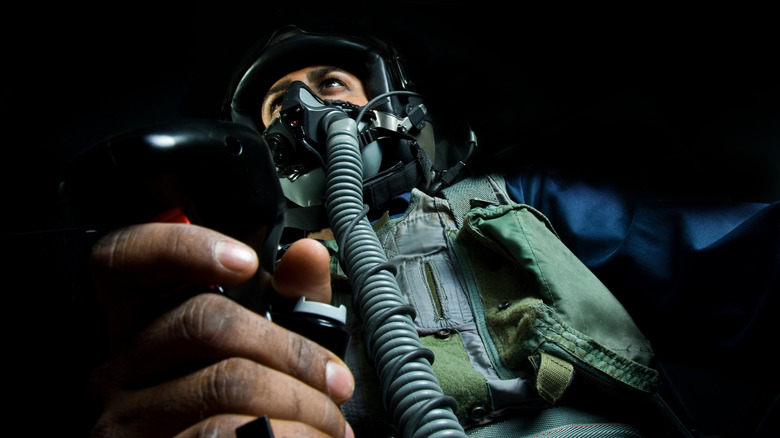How High Can Fighter Jets Actually Fly?
Do you ever think about how incredible it is that mankind actually has the ability to fly? We're a decisively landlocked species, and yet through the power of sheer ingenuity, we've not just taken to the skies, but fully asserted aerial dominance. Of course, as with most products of ingenuity, we can't help but wonder exactly how far — or in this case how high — our advancements could take us.
Out of most modern aircraft, military-grade fighter jets are the ones that generally fly the fastest and hit the highest altitudes. A commercial airliner doesn't need to go at hypersonic speeds or above the established flight paths, but a military jet needs to be able to go anywhere and everywhere, either in a dogfight or for the purpose of reconnaissance. Commercial airlines typically cruise at an altitude of 30,000 to 45,000 feet above sea level. The question is, then, exactly how high can a jet go?
Average flights and records
Military-grade fighter jets can go a bit higher than commercial flights with a range upwards of 50,000 feet above sea level, according to Simple Flying, but specifics aren't available, especially on a per-jet basis, thanks to military security concerns.
That said, we do have an idea of a potential upper limit thanks to a world record set back in 1976. Before the age of reconnaissance satellites and UAVs, the U.S. military needed high-altitude jets to be eyes in the sky, and one of the most high-flying was the Lockheed SR-71, also known as the Blackbird. It managed to exceed 80,000 feet
"With its ability to reach high speeds and high altitudes, the SR-71 was used to gather intelligence for the U.S. military during the Cold War," according to the Smithsonian. "The secret to the aircraft's speed and agility is largely in its unique engine inlets–a duct where air in brought into the engine."
Why can't jets fly higher?
The primary reason that jets don't exceed 50,000 feet on average is that fuel doesn't burn properly at high altitudes. That high above the ground, the oxygen in the air is very thin — jet fuel needs oxygen to ignite and power the engines. No oxygen, no fuel, no flight.
Attempting to fly that high in a manned vehicle is also extremely dangerous for fighter pilots for similar reasons. You know those thick masks that fighter pilots wear with the air tubes coming out of them? Those are necessary to deliver oxygen and keep their brains and bodies functioning. At that altitude, aircraft are more susceptible to decompression and engine failure. If the systems fail, not only will it be much harder to restart the engine, but the pilot's life could be in danger without the oxygen system.
The latter of these problems could be solved by switching to unmanned craft, but even so, if we want fighter jets that can go higher, we'll need a new kind of fuel that can burn even at low oxygen density.


